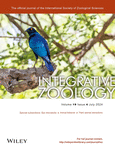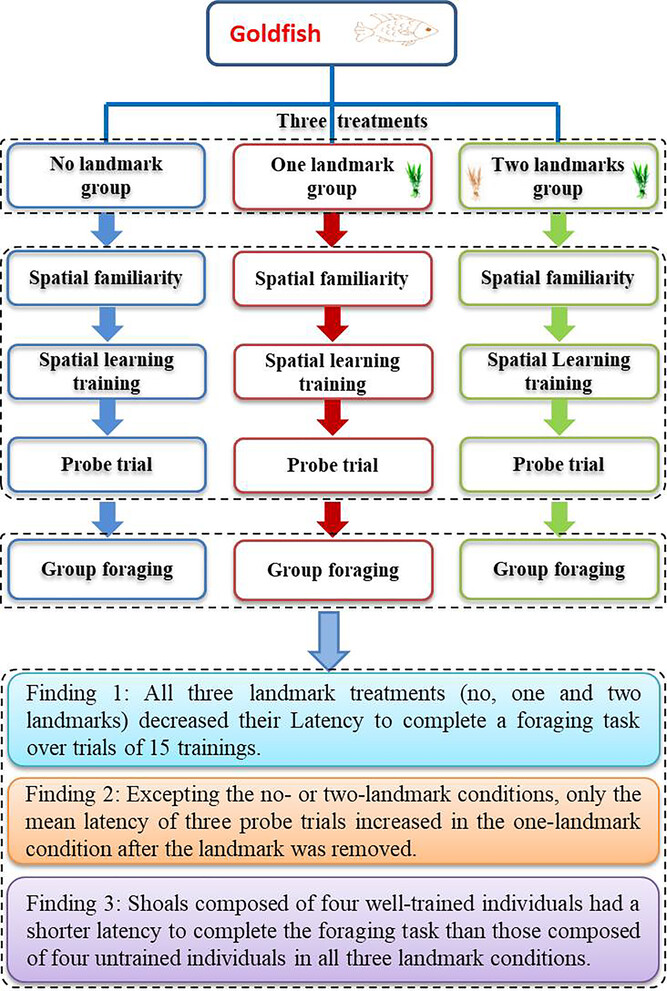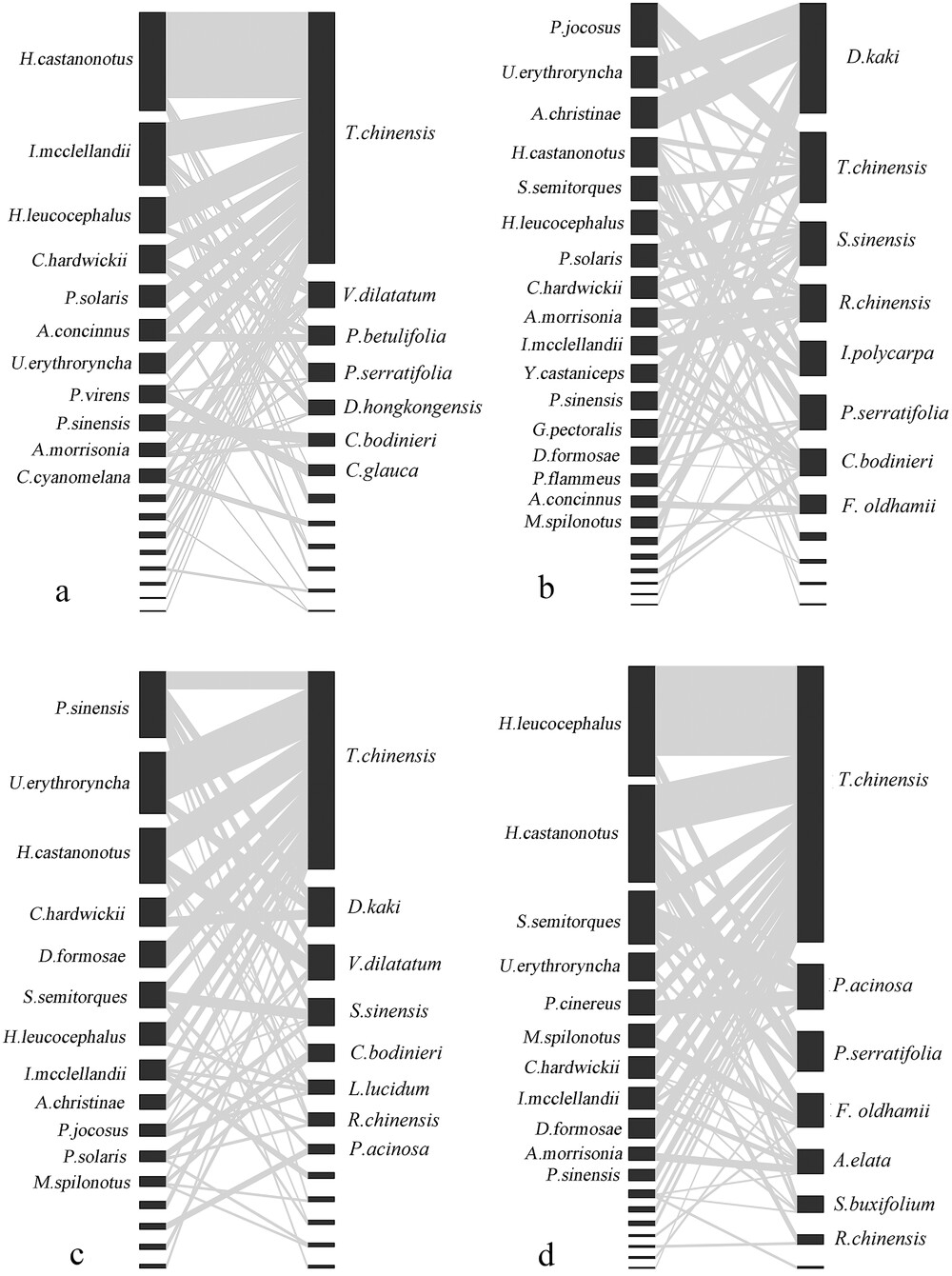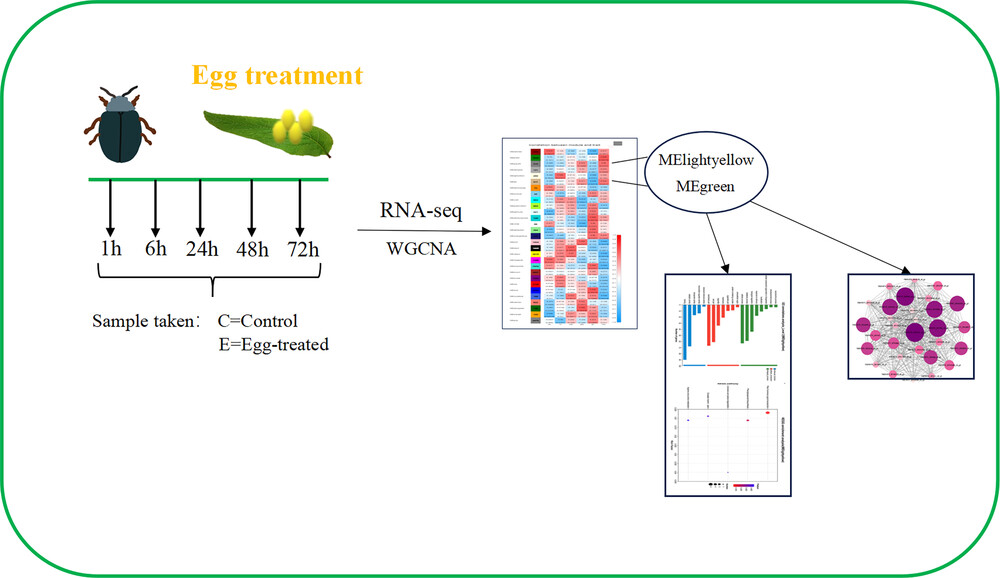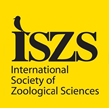Journal list menu
Export Citations
Download PDFs
ISSUE INFORMATION
Special subsection: Gut microbiota
Dietary tannins alter growth, behavior, and the gut microbiome of larval amphibians
- Pages: 585-595
- First Published: 08 August 2023
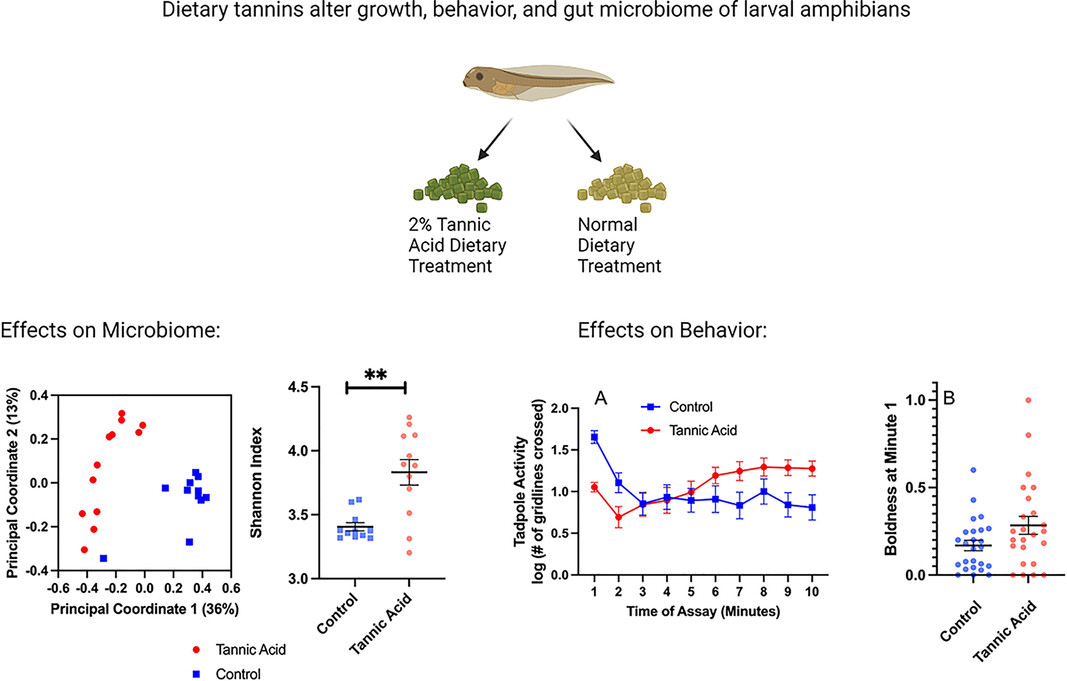
This study tested the effects of dietary tannins on larval amphibians. Dietary tannins sculpted the gut microbiome, with an increase in the measurement of Shannon entropy, and negatively affected growth. Dietary tannins also affected the boldness and exploration of the amphibians in a behavioral assay.
Quercetin promotes the secretion of musk by regulating the hormone level and microbial structure of forest musk deer
- Pages: 596-611
- First Published: 03 October 2023
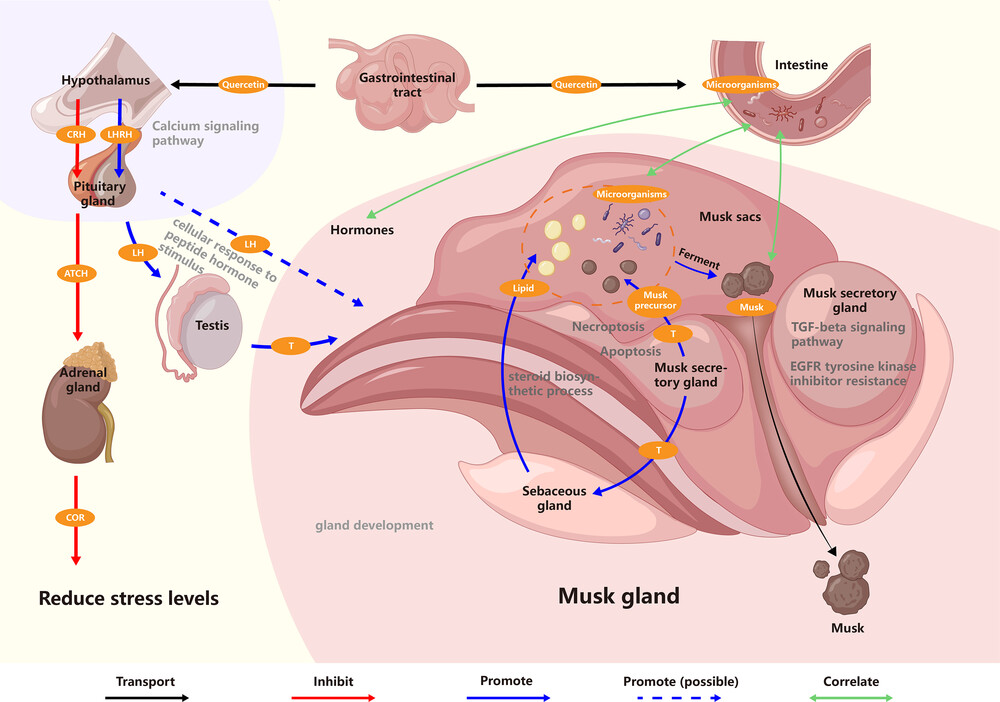
Quercetin promotes testosterone (T) secretion of forest musk deer through the hypothalamus–pituitary–testis axis. T acts on the musk gland and promotes the secretion of musk precursor. Quercetin also regulates the structure of intestinal microorganisms and musk microorganisms of forest musk deer and promotes the formation of mature musk. In addition, quercetin can also reduce the pressure on forest musk deer during the secretion of musk by inhibiting the secretion of cortisol.
The intestinal microbiota and metabolic profiles of Strauchbufo raddei underwent adaptive changes during hibernation
- Pages: 612-630
- First Published: 10 July 2023
The difference and variation of gut bacterial community and host physiology can support adaptation during and after overwintering in frog population
- Pages: 631-645
- First Published: 07 January 2024
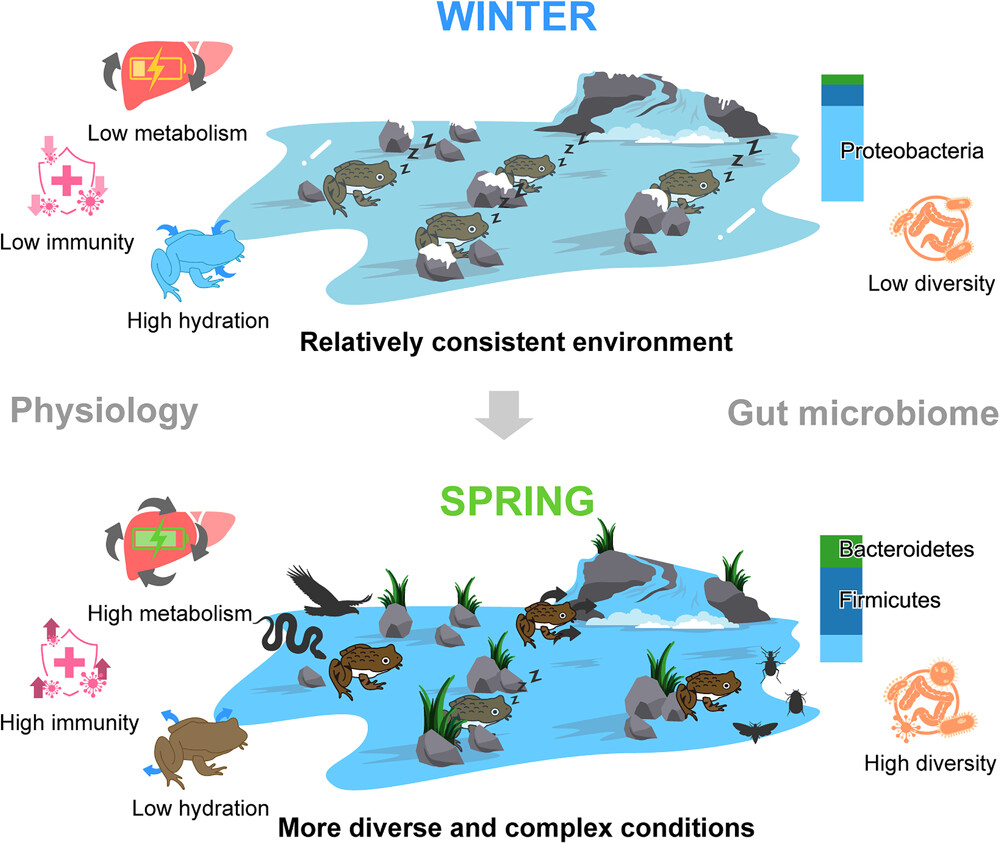
The gut microbiota and physiology help to understand the hibernation process. In particular, the diversity and composition of the gut bacterial community, and individual variation of host physiology, may help frogs adapt to unpredictable environments through metabolic availability after hibernation.
Livestock grazing is associated with the gut microbiota and antibiotic resistance genes in sympatric plateau pika (Ochotona curzoniae)
- Pages: 646-661
- First Published: 12 October 2023
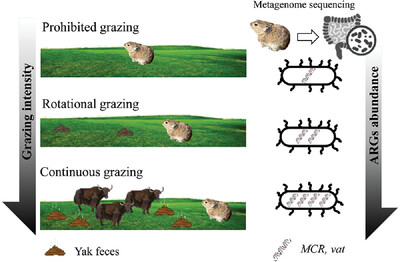
Antibiotic residues from veterinary medicines have increased the dissemination of antibiotic resistance genes (ARGs), leading to the enrichment of ARGs in wildlife. We found livestock grazing significantly altered the gut microbiota and resistome profile of plateau pika, with the enrichment of colistin (MCR) and streptogramin (vat) resistance genes. Our results hint that plateau pika is a potential reservoir of new antibiotic resistance genes.
Red pandas with different diets and environments exhibit different gut microbial functional composition and capacity
- Pages: 662-682
- First Published: 29 February 2024
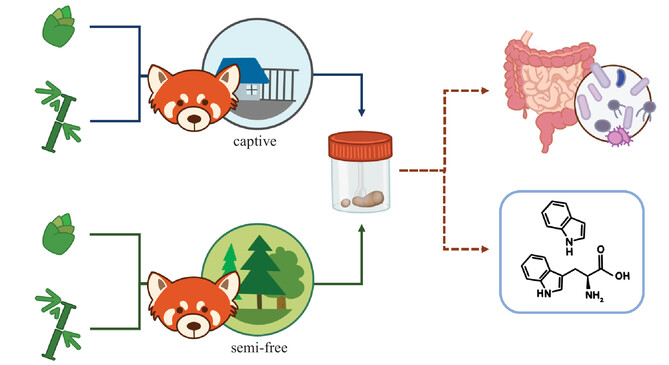
Analyzing fecal samples by metabolomic approach, 16S rRNA, and metagenomic sequencing, we determined that diet and captive environment play key roles in shaping the gut microbiota of captive red pandas. Our study suggests that red pandas fed on bamboo shoots had higher risk of intestinal diseases but tryptophan metabolites can help to maintain health. Moreover, semi-free environment brings higher microbial diversity and more active microbial metabolism to the gut of captive red pandas.
Special subsection: Animal behavior
Brain size mediates the choice of breeding strategy in the red-backed shrike Lanius collurio
- Pages: 683-693
- First Published: 09 January 2024
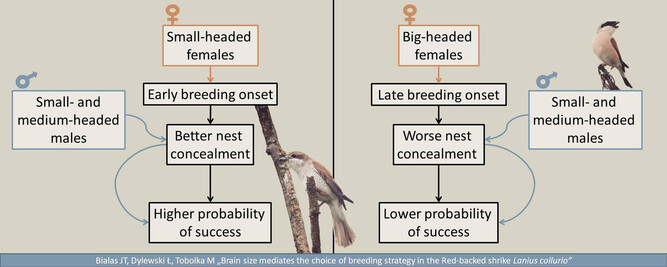
We found that the breeding onset in red-backed shrike Lanius collurio was related to the female head size, with large-headed females laying eggs later. The probability of breeding success increased with increased nest concealment, but not in large-headed males. Results suggest that large-headed females may take more time to choose a nesting site, which may delay the onset of breeding, and large-headed males may benefit from, or at least be able to compensate for poor nest concealment.
The male's scent triggered a neural response in females despite ambiguous behavioral response in Asian house rats
- Pages: 694-709
- First Published: 07 October 2023
Artificial light affects foraging behavior of a synanthropic bat
- Pages: 710-720
- First Published: 21 November 2023

We used Asian parti-colored bats as a model to explore the impacts of artificial light on foraging behavior. We found that bats reduced their foraging activity under white, blue, green, yellow, and red light. The peak wavelength of light was tightly linked to foraging activity, freezing time, and echolocation vocalizations of bats. This study expands our knowledge of the behavioral responses of bats to artificial light with different spectral compositions.
Individuals with spatial learning training experience increase group foraging efficiency in goldfish irrespective of landmark conditions
- Pages: 721-725
- First Published: 10 July 2023
BOOK REVIEW
- Pages: 726-727
- First Published: 07 March 2024
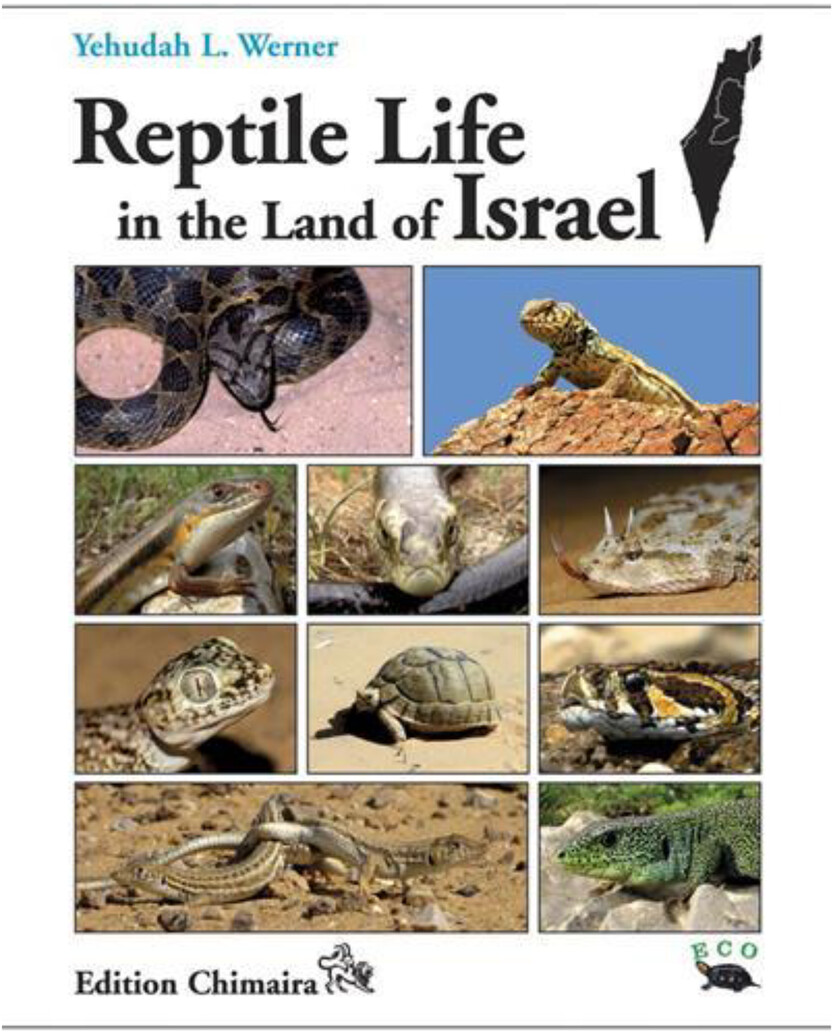
This book addressed all of the comments of Ineich (Bulletin de la Société Herpétologique de France, 2017, vol. 163, pp. 121–128). It was implemented in 2021, resulting in the addition of tens of references. Even the index is better in 2021, beginning with its structure and contents being explained. However, the 2021 book does have some flaws and oddities in itself, as portrayed in this review. Overall, this book is an impressive and valuable contribution to the field of herpetology. This book will undoubtedly be of interest to a wide range of readers, including professional herpetologists, wildlife enthusiasts, and anyone with an interest in the natural history of the region, and though it is written in Hebrew, it may supplement the English version, due to the better coloration and contrasts of the photos.
Special subsection: Plant-animal interactions
Recovery of small rodents from open-pit marble mining: effects on communities, populations, and individuals
- Pages: 728-742
- First Published: 13 February 2024
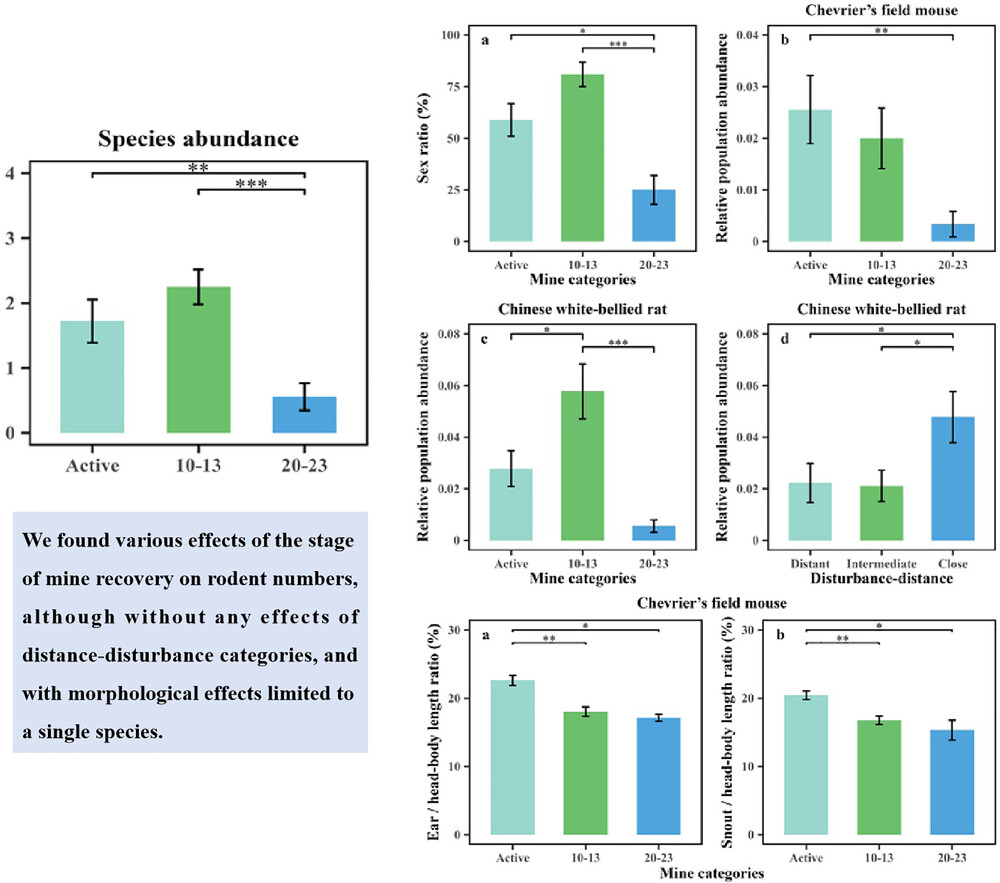
We examine the response of spatiotemporal dynamics within the community of small rodents as they respond to the natural recovery of open-pit marble mining sites at the community, population, and individual levels. We found various effects of the stage of mine recovery on rodent numbers, although without any effects of distance-disturbance categories and with morphological effects limited to a single species.
Parasitic flies alter the dietary preference of grasshoppers
- Pages: 743-752
- First Published: 10 July 2023
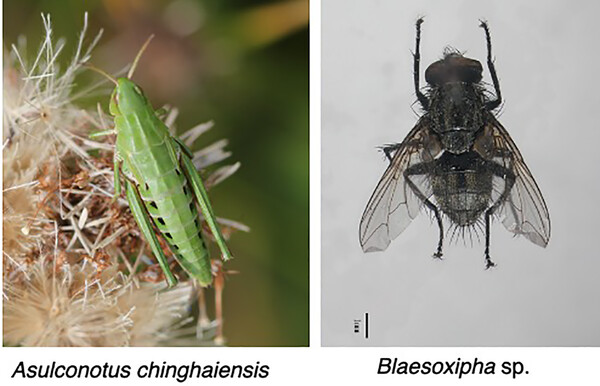
Here, we show that the plant species composition and diet C/N contents differed significantly between the unparasitized and parasitized grasshoppers, and that the abundance of N-rich legumes was lower but that of high C/N grasses was higher in the diet of parasitized females and males compared to the unparasitized ones. This suggests that parasites can alter the dietary preference of hosts.
Importance of plant and fruit traits on the structure of bird seed dispersal networks in different disturbed habitats
- Pages: 753-762
- First Published: 15 March 2024
Multiple interaction networks reveal that Lepidoptera larvae and adults prefer various host plants for diet and pollination
- Pages: 763-776
- First Published: 10 July 2023
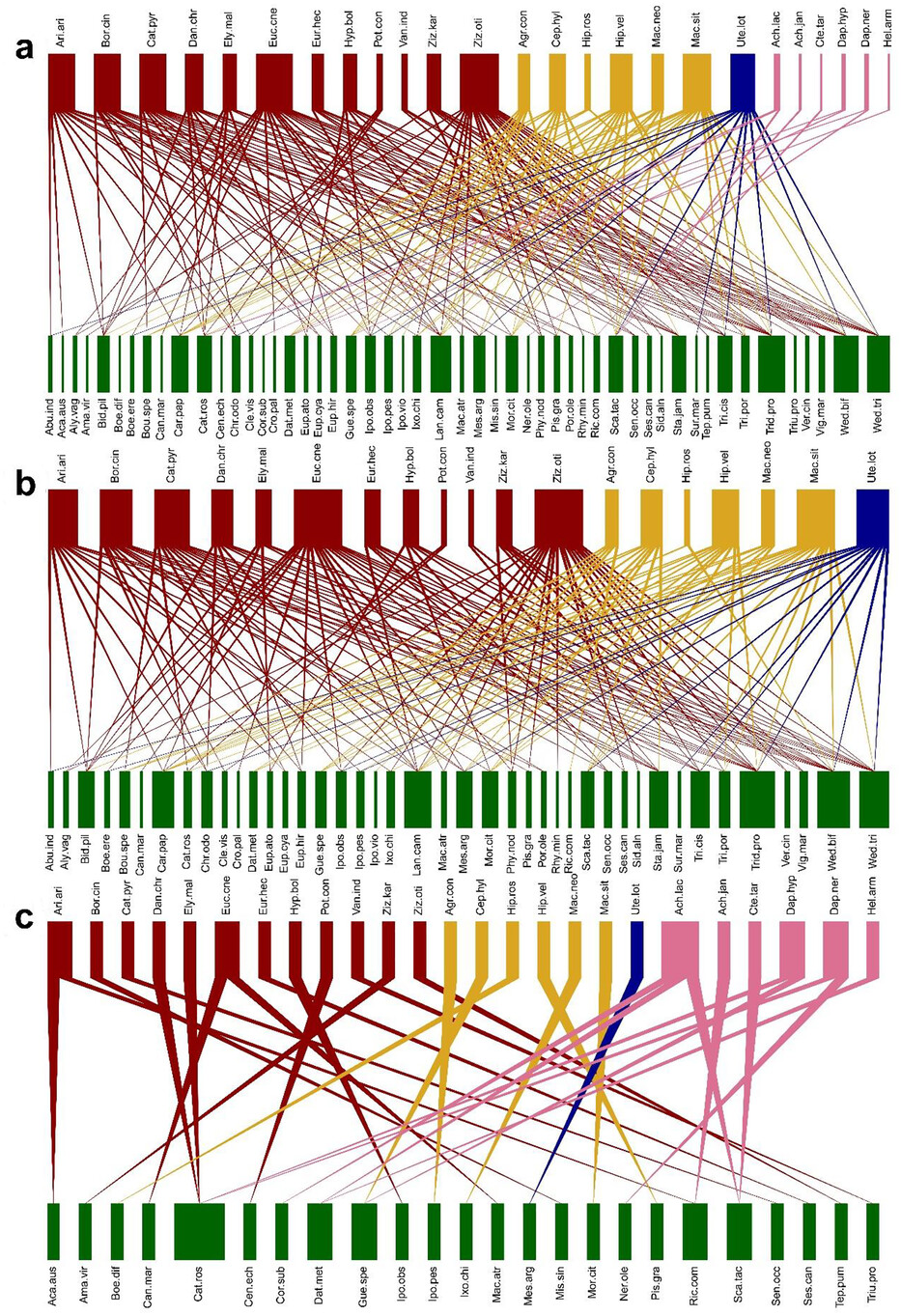
The plant-Lepidoptera pollination network and herbivory network share significant proportions of Lepidoptera but small proportions of plant assemblages. The pollination network had higher nestedness and connectance than the herbivore network. Three qualitative plant–Lepidoptera interaction networks in the Yongxing Island community: (a) the whole network (WN), (b) pollination network (PN), (c) herbivore network (HN). In each network, the boxes represent Lepidoptera species (top row) and plant species (bottom row, green), and connecting lines represent links between plant and Lepidoptera species. The color codes of rectangles are: dark red, butterflies; dark yellow, hawkmoths occurred in both pollination network and herbivore network; dark blue, Arctiidae; pale violet red, Noctuidae and hawkmoths only occurred in herbivore network. Full names of plant and Lepidoptera species are shown in Tables S5 and S6, Supporting Information. The pollination network had higher nestedness and connectance than the herbivore network.
Study of the pollen type in Neotropical hawkmoths (Lepidoptera: Sphingidae: Macroglossinae) collected in the Brazilian Atlantic Forest
- Pages: 777-783
- First Published: 21 November 2023
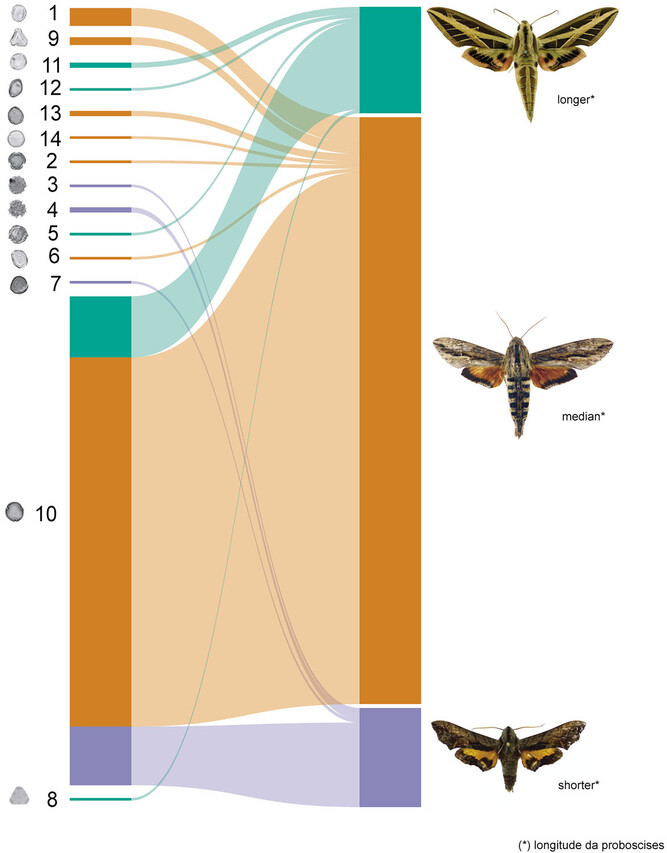
We recorded 14 pollen types belonging to 12 families of angiosperms. Pera (Peraceae) pollen type was found in all genera and was the most abundant. Our results suggest low specificity in the choice of flowers; thus, Sphingids with either short or long proboscises visited flowers of the same species.
Temporal transcriptomic changes in willow leaves oviposited by Plagiodera versicolora
- Pages: 784-787
- First Published: 25 December 2023
Correction
Corrigendum to “Evolution and conservation genetics of pangolins”
- Page: 788
- First Published: 09 June 2024




